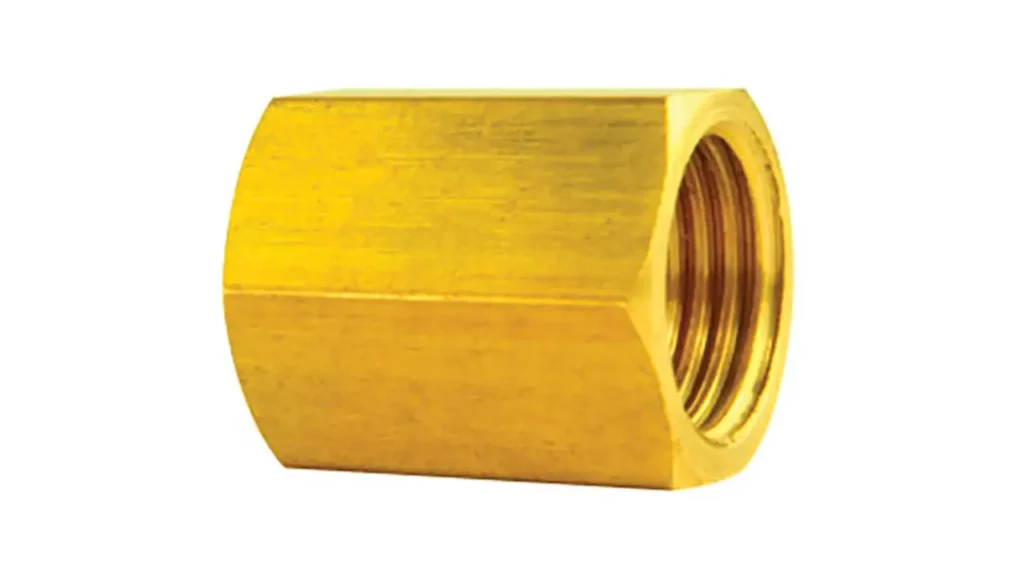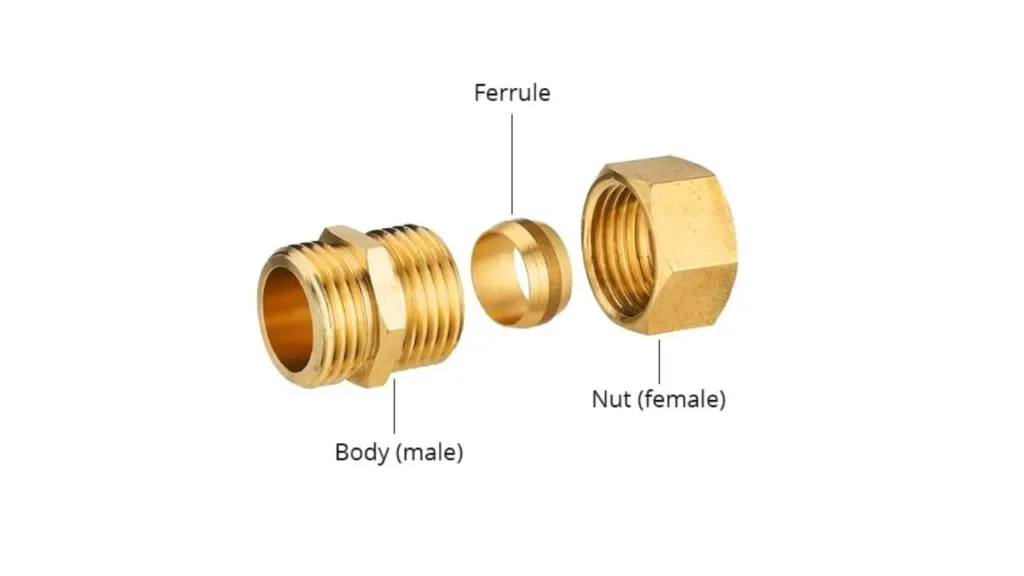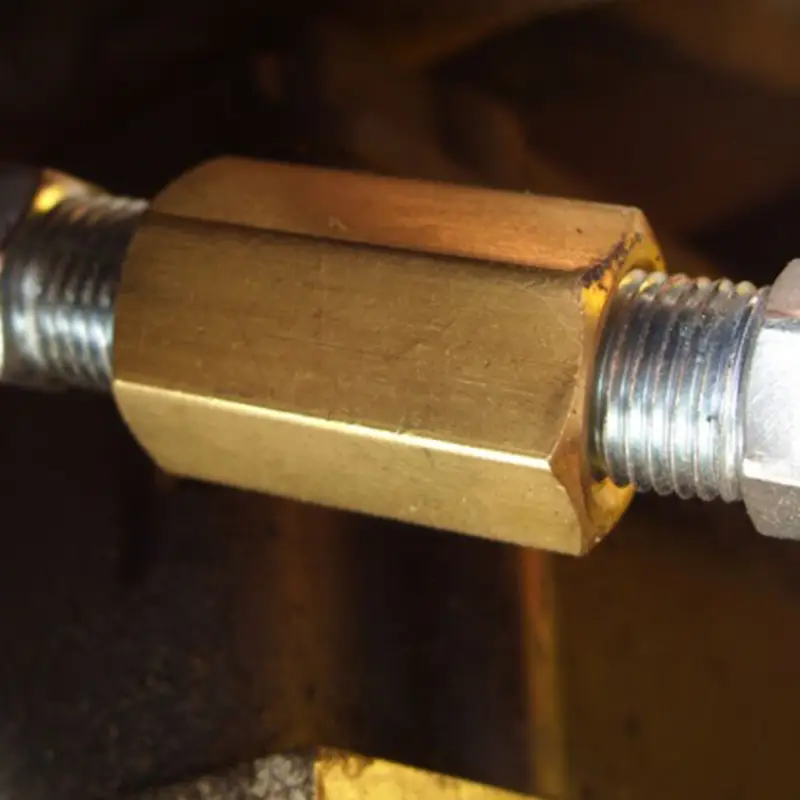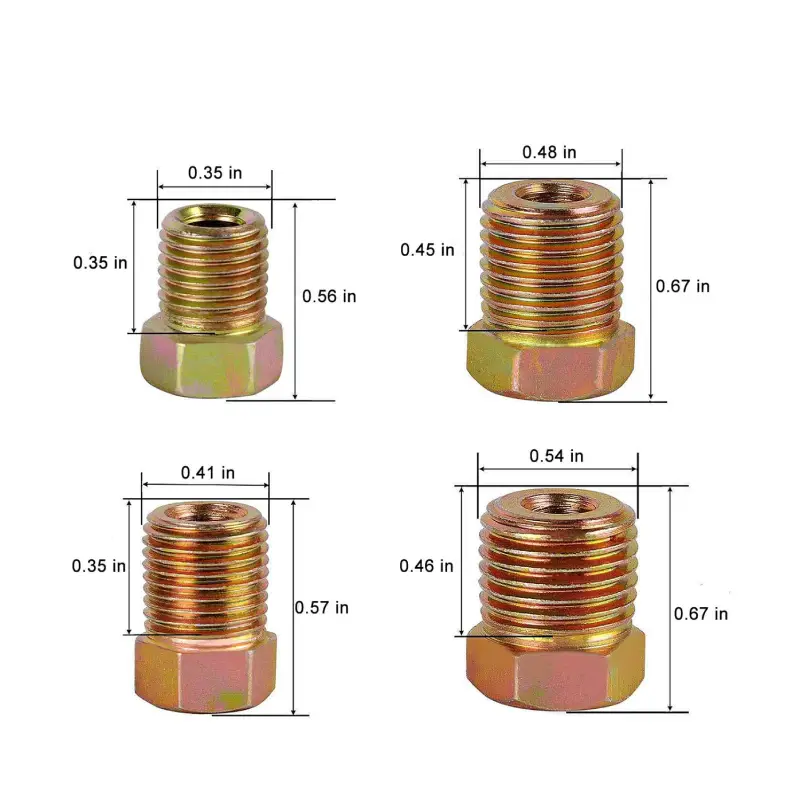When repairing or modifying brake lines, choosing the correct fitting is crucial for safety and performance. Brake line unions and compression fittings are two common options, but they serve different purposes and have distinct characteristics. Understanding their differences is essential for making informed decisions and ensuring reliable brake system functionality.
This blog post will delve into the key distinctions between brake line unions and compression fittings, exploring their applications, advantages, and limitations. We’ll examine their construction, installation methods, and suitability for various brake line repairs, providing you with the knowledge to select the appropriate fitting for your specific needs.
What Is Brake Line Union

A brake line union is a fitting designed to connect two sections of brake line together, typically used when repairing or extending existing brake lines. These unions are engineered to create a secure, leak-free connection, ensuring that hydraulic pressure is maintained within the brake system. They are crucial for maintaining the integrity of the braking system, as any leakage can lead to a loss of braking power and compromise vehicle safety.
These fittings are typically used with flared brake lines, where the end of the line is shaped into a flare (either inverted or bubble) to create a tight seal against the union. The union itself consists of a body with threaded ends and internal seats that match the flare on the brake line. When tightened, the union compresses the flared ends, creating a robust, leak-proof connection that can withstand the high pressures and vibrations associated with braking systems.
What Is Compression Fitting

A compression fitting is a type of connector used to join two pieces of tubing or piping without the need for soldering, welding, or flaring. It utilizes a compression nut and a sleeve (or ferrule) to create a seal. As the nut is tightened, the sleeve compresses onto the tubing, forming a tight, leak-resistant connection. This method is often preferred for quick repairs or in situations where heat or specialized tools are not readily available.
Compression fittings are commonly used in various applications, including plumbing, automotive, and hydraulic systems. However, their suitability for high-pressure systems like automotive brakes is a subject of debate. While they offer convenience, they may not provide the same level of long-term reliability as flared fittings, especially under the extreme pressures and vibrations experienced in braking systems. Therefore, their use in critical safety applications is often discouraged or regulated.
Brake Line Union vs Compression Fitting

Understanding the differences between brake line unions and compression fittings is crucial for ensuring safe and effective brake system repairs. Both fittings serve to connect brake lines, but they differ significantly in design, application, and reliability.
Here’s a detailed comparison about the differences between brake line unions and compression fittings:
Connection Mechanism
Brake line unions are designed to connect flared brake lines. The union consists of a body with threaded ends and internal seats that match the flare on the brake line. When the union is tightened, it compresses the flared ends of the brake lines, creating a strong, leak-proof metal-to-metal seal. This connection is robust and designed to withstand high pressures and vibrations, ensuring long-term reliability.
Compression fittings, on the other hand, use a compression nut and a sleeve (or ferrule) to create a seal. As the nut is tightened, the sleeve compresses onto the brake line, forming a mechanical grip. This method does not require flaring the brake line, making it a simpler and quicker connection. However, the seal relies on the compression of the sleeve, which may loosen over time due to vibrations and pressure changes, leading to potential leaks.
Pressure Resistance
Brake line unions, when used with properly flared brake lines, offer excellent pressure resistance. The metal-to-metal seal created by the flared ends and the union body is designed to withstand the high pressures generated within a brake system. This robust connection ensures that hydraulic pressure is maintained, providing reliable braking performance.
Compression fittings are generally considered less reliable in high-pressure applications like brake systems. The compression seal created by the sleeve may not withstand extreme pressures and vibrations as effectively as a flared connection. This can lead to leaks and compromised braking performance, especially in demanding driving conditions.
Installation Complexity
Installing brake line unions requires flaring the brake line ends, which necessitates specialized flaring tools and some expertise. The process involves shaping the brake line ends into a flare (either inverted or bubble) to create a proper seal. While this method is more complex, it provides a more reliable and durable connection.
Compression fittings are relatively easy to install, as they do not require flaring. The brake line is simply inserted into the fitting, and the compression nut is tightened. This simplicity makes compression fittings a convenient option for quick repairs or in situations where flaring tools are not available. However, this ease of installation comes at the cost of potential long-term reliability.
Long-Term Reliability
Brake line unions, when properly installed, offer excellent long-term reliability. The metal-to-metal seal created by the flared connection is designed to withstand the demanding conditions of a brake system, ensuring consistent performance over time. This makes unions a preferred choice for permanent repairs.
Compression fittings may not provide the same level of long-term reliability. The compression seal created by the sleeve can loosen over time due to vibrations, temperature changes, and pressure variations. This can lead to leaks and compromised braking performance, making compression fittings less suitable for permanent repairs in critical safety systems.
Application Suitability
Brake line unions are highly suitable for permanent repairs and new installations in brake systems. They are the preferred choice when long-term reliability and safety are paramount. Their robust connection ensures that hydraulic pressure is maintained, providing reliable braking performance in all driving conditions.
Compression fittings are generally considered more suitable for temporary repairs or in low-pressure applications. They offer a quick and convenient way to connect brake lines, but their potential for leaks makes them less ideal for high-pressure systems. Their primary function should be to facilitate moving a vehicle to a place where proper repairs can be completed.
Brake Line Union vs. Compression Fitting Comparison Chart:
| Feature | Brake Line Union | Compression Fitting |
| Connection Mechanism | Metal-to-metal seal with flared brake line ends. | Compression seal with sleeve and nut. |
| Pressure Resistance | Excellent, designed for high-pressure brake systems. | Generally lower, less reliable in high-pressure applications. |
| Installation Complexity | Requires flaring tools and expertise. | Simple, no flaring required. |
| Long-Term Reliability | High, preferred for permanent repairs. | Lower, potential for leaks over time. |
| Application Suitability | Permanent repairs, new installations, high-pressure systems. | Temporary repairs, low-pressure applications. |
Conclusion
In summary, brake line unions and compression fittings serve distinct purposes in brake system repairs. Unions offer a permanent, leak-free connection when flaring is possible, ensuring long-term reliability. Compression fittings, while convenient for temporary fixes, are less ideal for high-pressure brake systems due to potential leakage. Understanding these differences allows for informed decisions based on repair needs and safety considerations.
Choosing the right fitting is crucial for maintaining brake system integrity. Unions provide a robust, lasting solution, while compression fittings offer a quick, albeit less reliable, alternative. Factors like pressure, accessibility, and repair permanence should guide your selection. Prioritizing safety and long-term reliability is paramount.
For high-quality, durable hydraulic fittings, including brake line unions and various other types, request a quote from DF Hydraulics today. We offer a comprehensive range of fittings designed to meet stringent industry standards, ensuring safe and efficient hydraulic system performance. Contact us to discuss your requirements and benefit from our expert service and competitive pricing.


